When it comes to road transport, four wheels are generally better than three. And if staying dry and safe bothers you, certainly better than two.
Suzuki’s little SJ410 4×4, however, occasionally seemed uncertain over whether it was on four wheels or two, with rather too much of its maker’s proud motorcycle history on show while cornering. You see, the SJ410, a rather neat and temptingly affordable jeep-in-miniature, had a tendency to tip and fall over.
Install somebody young, fast and unaware behind its neat plastic wheel, show them a bend and they could rapidly learn about the effect of a high centre of gravity on a tall, narrow object travelling at speed. As well as the unsuitability of off-roaders for driving quickly on the road.
A bit of all-white
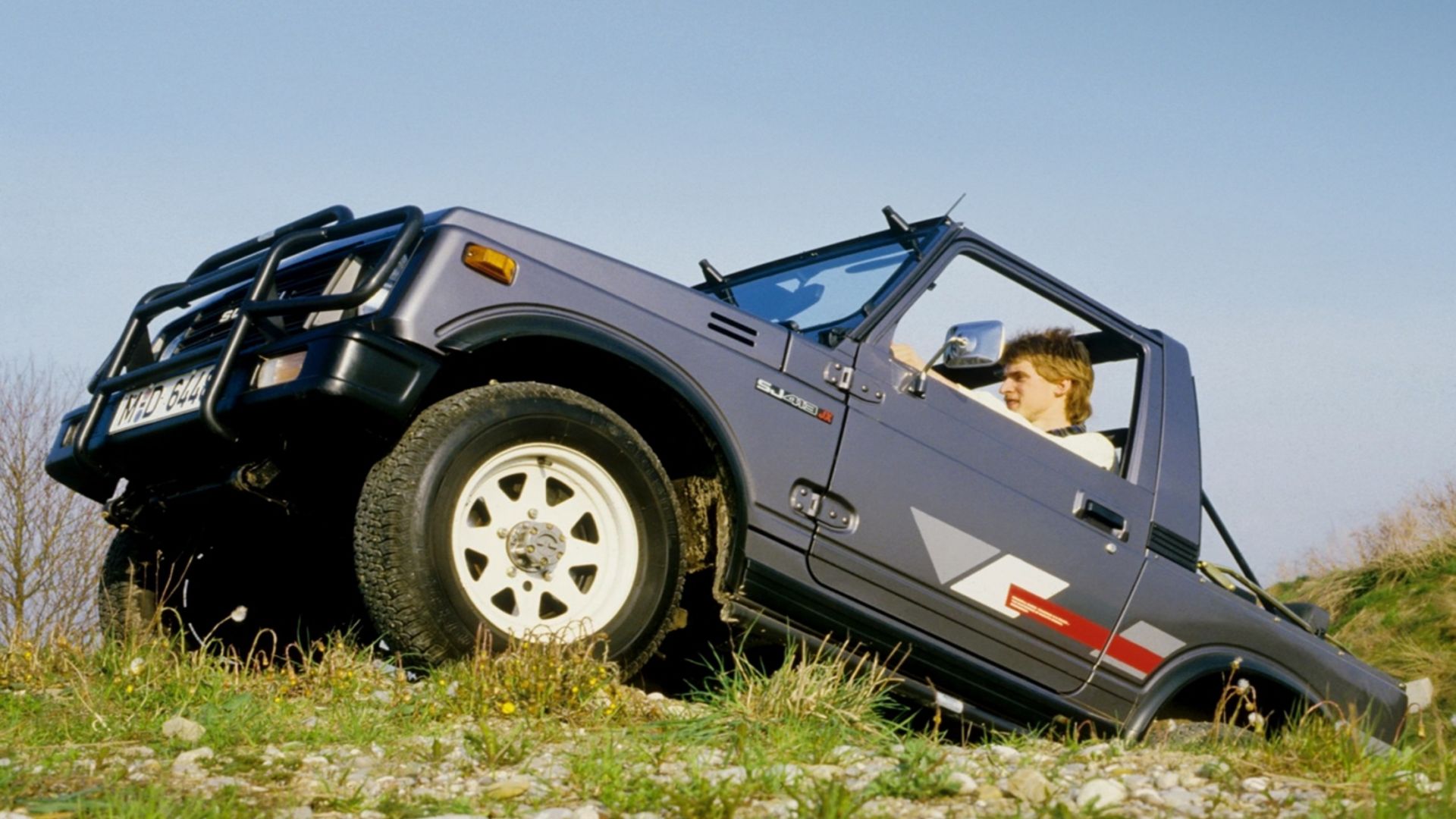
Not that ‘cool’ was a cool word in the mid-1980s, when the Suzuki SJ really took off. But the Suzuki suddenly became a very cool thing, particularly if it was white, had white wheels and was (usually) occupied by someone wearing white stilettos.
Commonly found outside nightclubs in the era when George Michael, Madonna, Duran Duran and Frankie Goes to Hollywood sang floor-filling hits, the SJ was a favoured set of wheels for the legendary 1980s Essex Girl, who usually chose the soft-top version of this tiny 4×4 to better show off her orange tan and peroxide-streaked hair. Occasionally, this myth was even true.
The Suzuki SJ, however, was not originally designed for the cocktail-and-paper-umbrella world at all. It was a descendant of Suzuki’s 1970 LJ20, a miniature twin-cylinder 4×4 with utility styling, selectable four-wheel drive and a price low enough to forgive its canvas doors.
Cleverly, its spare wheel was stored behind the front passenger seat so that it squeezed within the tight dimensions required of a Japanese Kei car.
Cheerful and cheap
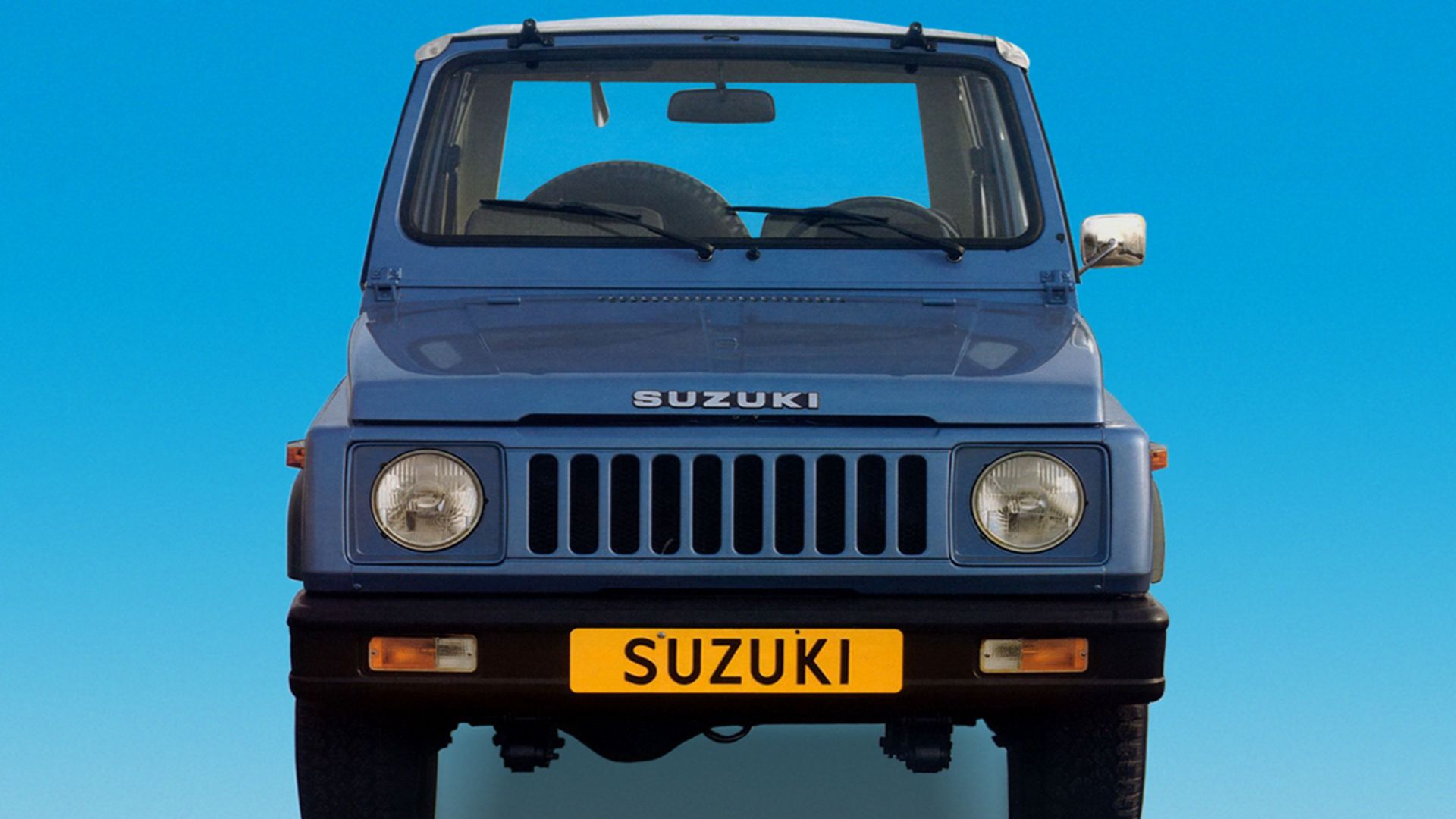
Despite its puny 25hp, the LJ was an effective device in a quarry and proved popular with civil construction companies. They favoured it over Land Rovers, because the LJ was so cheap its purchase price could painlessly be written-off over the life of the contract, the heavily-abused Suzuki binned after the project was completed. Others simply bought them as a cheap set of fun wheels.
Suzuki had discovered a new niche, and in 1975 it enlarged the LJ’s 360cc twin to a heady 550cc, creating the LJ50. The spare wheel migrated to a mounting hung from the LJ’s rear end, as this big-engined export version no longer needed to comply with Kei car rules.
It sold well in Australia, encouraging Suzuki to introduce the still-more-reckless LJ80, this time with a four-cylinder motor developing a rampant 41hp. The LJ80’s eventual launch into the Netherlands (the absence of inclines presumably flattering its performance) formed a bridgehead for an advance party of these baby 4x4s into Europe.
A motorised mountain goat
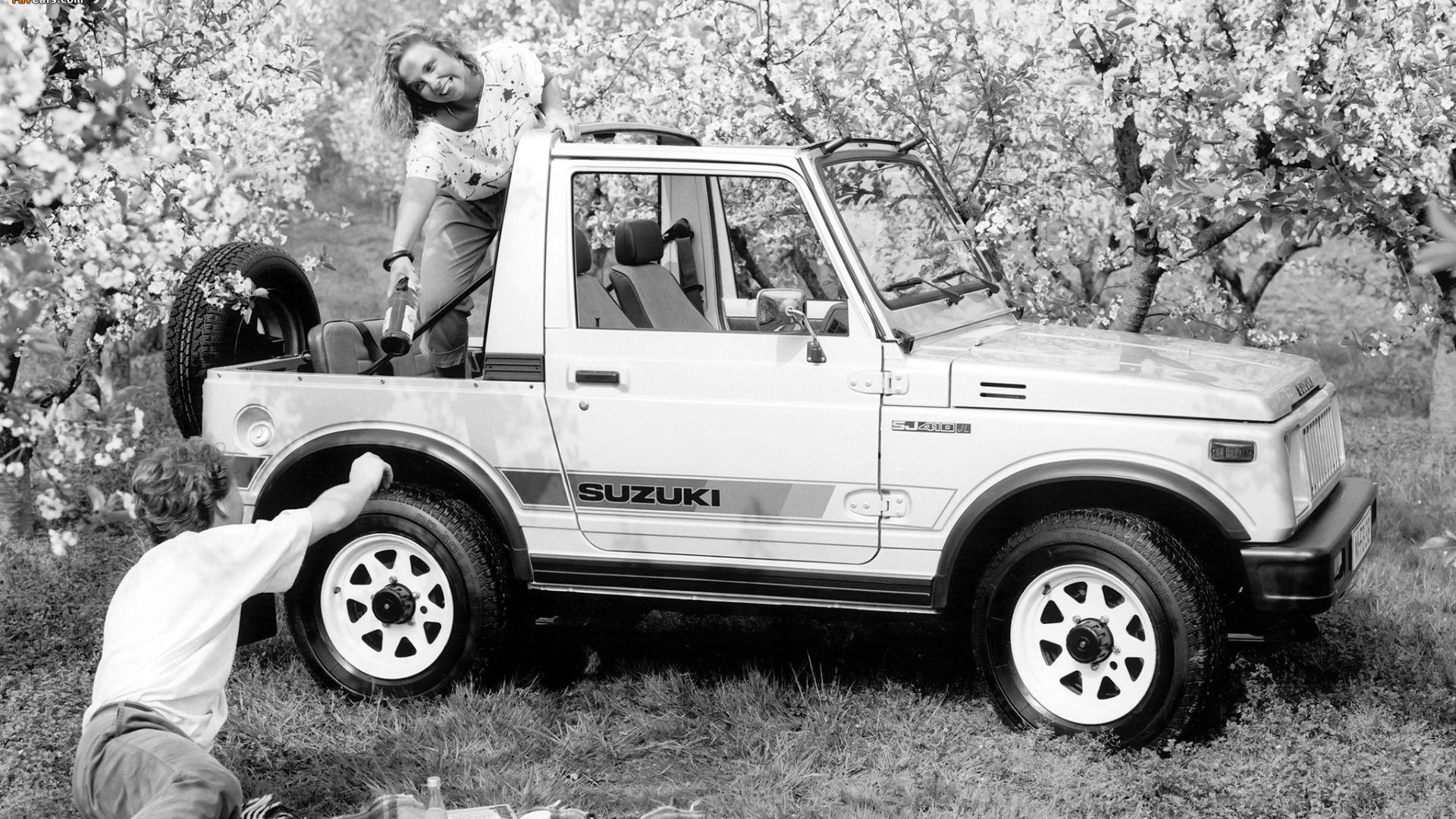
However, it was the SJ of 1982 that led the invasion into Britain’s nightlife, although it took a while to warm up. Launched as the SJ410, it was propelled by a 45hp 1.0-litre four that could push it no further than 68mph. This was fine for off-roading, albeit less effective on the A118 to Romford.
A separate ladder chassis, simple drum brakes and a quartet of leaf springs were designed to sustain a tough life on building sites and in the bush, while spanners and a welding torch were good for fixing anything that broke. Not that much did – the SJ was a tough little thing.
Like plenty of early off-roaders, this Suzuki used part-time four-wheel drive, the price-reducing absence of a centre differential not only requiring you to jab a lever for all-wheel drive, but also to get out and lock the front wheel hubs.
That wasn’t good for footwear if you’d entered a bog, especially if you had on white stilettos. But with low range as well, you could get yourself across some pretty testing terrain. And being light – just 850kg as a soft-top – the SJ could get about like a mountain goat. And all without munching on the local vegetation.
Reign in Spain
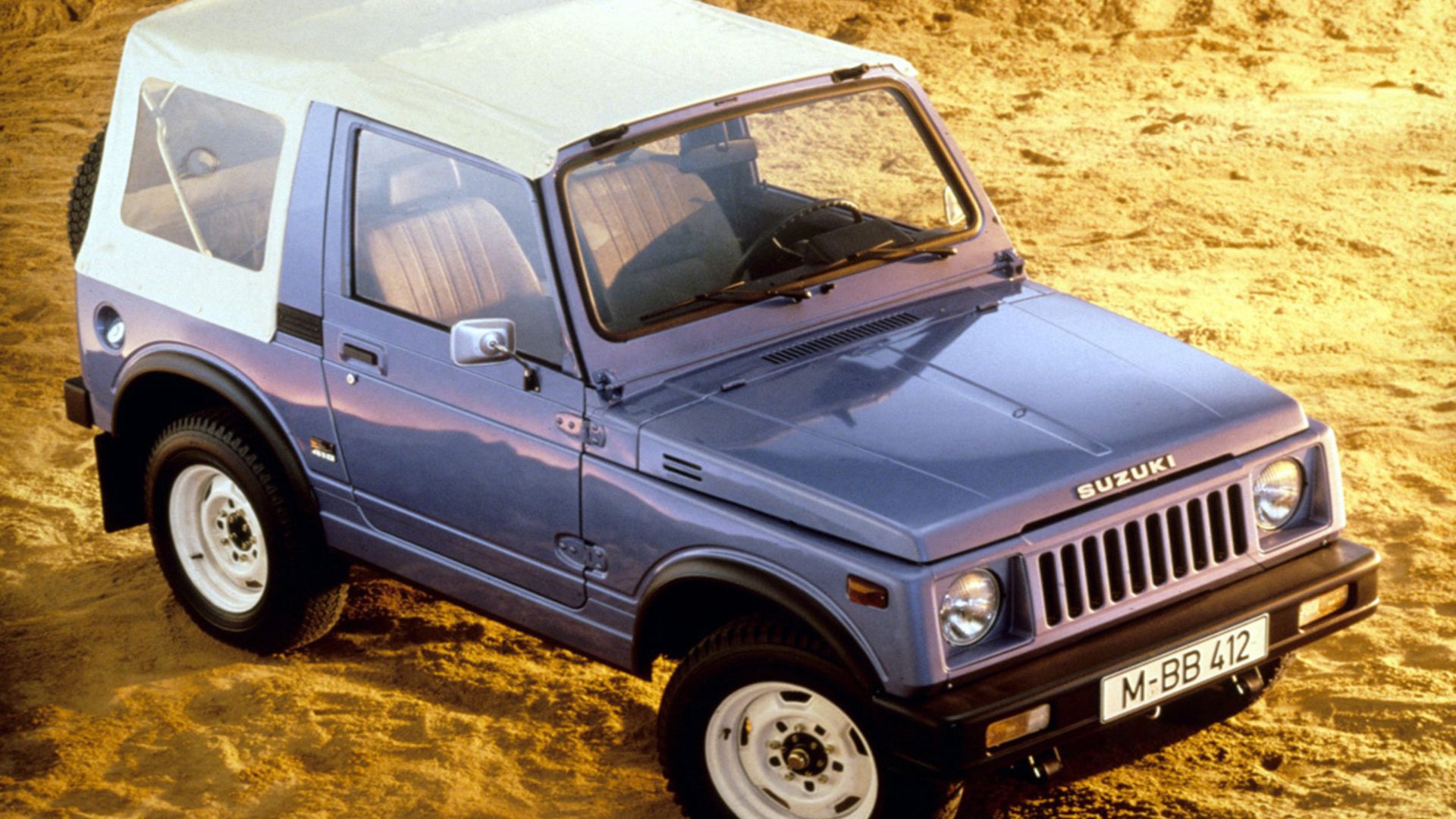
In Britain, sales were limited by the fact that there was a quota applied to the import of Japanese cars. The so-called Gentlemen’s Agreement was largely devised in a (failed) bid to protect British Leyland’s tumbling market share.
Suzuki investigated building the SJ in Europe to circumvent it, and did a deal with Spain’s Santana Motor. Ironically, Santana also made BL’s Land Rover to its own recipe. Assembly of the SJ began in 1987, allowing Suzuki’s increasingly successful UK importer to bring almost unlimited numbers into the country.
Two years earlier, the SJ413 had been launched as an estate, its 1,324cc motor putting out 66 ground-quaking horsepower to further tempt buyers. This and a five-speed gearbox boosted top speed by 10mph to 78mph, although it was still going to struggle against a white Escort XR3i cabriolet screaming its way to Millionaires.
Bulls and rhinos
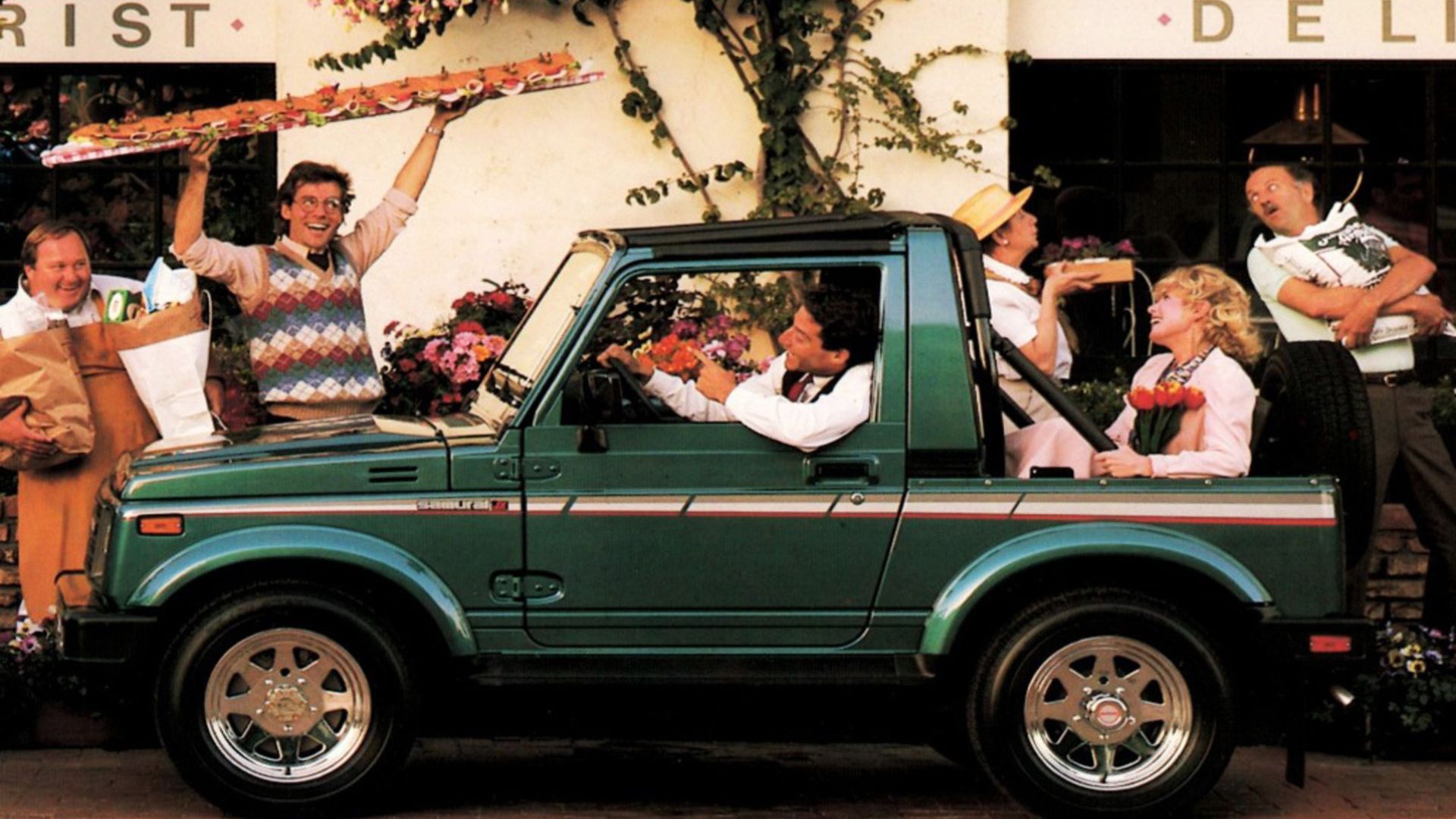
Unfortunately, before that came scandal, and not of the Essex girl variety. An assortment of consumer bodies, including Britain’s Which? and America’s Consumer Reports, discovered that if you drove a tall and narrow vehicle into a bend faster than you would, say, a Lotus, it tended to topple over.
In fact, you could be going a lot slower than you would in a Lotus and still momentarily reduce tyre wear on the SJ’s inboard flank.
The discovery of this destabilising habit produced a small explosion of angry newsprint. And in America, a lawsuit, which uncovered the fact that Suzuki had tried to hide the truth about the SJ’s instability. Little of this seemed to impede sales and certainly didn’t produce a recall. Instead, salespeople were lamely told to make buyers aware of its on-road limitations.
Towards the end of the 1980s the SJ had almost become a cult car, its UK importers cannily exploiting its appeal with the sale of special versions like the Rhino, complete with silhouette of said beast on the spare wheel cover, graphics packs, alloy wheels, bull-bars and side rails.
Caught on camera

In 1988, Suzuki introduced the decidedly more stylish Vitara, whose stabilising extra width usefully diminished the chance of scraping its roof. That sold well in white, too.
Today the SJ is almost forgotten, partly because it became as unfashionable as shoulder pads, but also because most disappeared into the ether, their thin steel panels dissolving as fast as ice cubes after the party.
If you want to relive some of the experience – though not the tendency to topple – you can buy the Suzuki Jimny, the SJ’s diminutive and long-running successor, which first debuted in 1997. It’s not so great on road, but it’s brilliant off-it, and doesn’t cost much. Which was Suzuki’s original point.
And before you go, here’s the video that caused all the fuss…
ALSO READ:
Great Motoring Disasters: Ford Scorpio



[…] centre of gravity. It never did so with me, but yes, a couple of times it felt like it was almost going on to two wheels, if I went too quickly round a […]
The LJ80s were plentiful on greek islands, leased to tourists who wanted to explore the more remote beaches. I was one of them in my very young days, but I cannot say I had been very confident of the Suzuki’s cornering abilities. OK, the first I rent locked up its right rear wheel as soon as you put some pressure on the brakes. This made me divide my driving into three strictly non-simultaneously phases: accelerating, braking, steering. Never more than one of it at the same time.
Later I learned a friend has managed to topple his LJ over the side when he performed some risky driving on a beach.
Therefore I am not so sure about the cornering abilities of the little Suzuki, but it is a big fun to drive anyway.
Yet another article perpetuating the myth that the SJ was unstable – completely debunked both in the US and in Europe by the relevant authorities. It was proven that the 410/413 were no more liable to turn over than any other 4×4! What GM, Landrover and the other established manufactures of off road vehicles didn’t like was the fact that the SJ could and still can leave bigger more powerful machines for dead off road, simply floating over and around terrain that utterly defeats modern machinery. What’s more to the point you don’t need to plug it into a laptop or dealers diagnostics to be able to fix one – just a basic tool kit and common sense. The ONLY reason an SJ becomes unstable is when you drive it like an idiot, which is pretty much like most vehicles of its genre anyway! They weren’t designed to be high speed track vehicles , they were aimed at the agricultural market and small holding owner who needed a light weight vehicle with a reasonable load capacity to work off road etc. Suzuki got it 100% right and it wasn’t long before the rest of the world cottoned on to the concept and all of a sudden they became very popular with new and young drivers. Until you’ve driven one, don’t bother to read/listen to the drivel in the press etc, no they aren’t like a modern car in many ways, but they do offer an authentic driving experience that connects you directly to the road via the steering wheel and tyres. Besides which, life is way, way to short to waste fixing ‘Landrovers’………
I loved mine, you could climb up the side of a wall with ease, simple as! – The name SJ410 – Sounds way cooler than ‘Jimny’ oh dear such a tragic name 🙁 I havn’t really looked at the new ‘JIMNY’ but i bet it’s bristling with technology and loads of stuff to stuff you!
As stated by everyone else – the American DOT doctored their reports on the stability, to the point where Suzuki took them to court. The publication harmed Suzuki’s reputation to this day, only because import sales from Japan was worrying the US car makers. That information is available online, if only you did some research outside of the usual before you wrote the article.